05 Sep The two key drivers of a powerful executive narrative. One, executive. Two, narrative.
By Graham Button
We communicate all the time, it’s the human condition.
We do it when we mean to, we do it when we don’t. We do it when we talk, sometimes more when we just listen. We convey one thing when we’re clear, other things when we aren’t. We communicate through gestures, actions, behavior – what we do says a lot, how we do it says more, why we do it says everything. And all of it is up for misinterpretation – the audience is boss, we’re not. “The single biggest problem in communication,” as George Bernard Shaw famously said, “is the illusion that it has taken place.” It’s true for people, and it’s no different for companies.
But while an individual speaks with one voice, a company has many. For any organization, the trick is telling one story one way. But, ground your communications in a true, emotionally-resonant story, and you create powerful strategic leverage. Fail to do it in a world that answers to the internet, and the crowd will tell it for you – based on random data points, bias, and the itch to gossip – that’s human too. Patagonia, Chipotle, Starbucks and Nike have weathered scandals of human trafficking, food-borne illnesses, racism, and child labor mostly thanks to rooted, authentic, inspirational core narratives.
But in the hurly-burly of running a business, storytelling is hard to prioritize. Vision belongs to the CEO, but he or she has to make it happen while driving organizational fitness and managing the board, workforce, shareholders, market disruption and the crisis of the day. The CCO owns corporate reputation and global citizenship, but is tangled up trying to manage constituencies inside the culture, and the news rodeo outside it. The CMO champions positioning and differentiation, through user experiences that move customers from transaction to relationship – but the squeaky wheel is immediate sales. IR executives want to paint the big picture, but they’re marching quick-time to the beat of the quarterly numbers.
When these four voices sing one clear song, two things happen. First, the company’s story is reinforced and amplified. Employees, shareholders, partners, customers, media and the financial markets experience the company as a strategic force, not a tactical weather vane. This, not surprisingly, builds trust all around. And second, everyone in management feels their reason for being, which makes collaboration easier and innovation more likely. Not to mention the confidence that comes from knowing where they’re taking the company.
So, what does it look like, this magic narrative? Where does it come from, what is it made of? How does it position you as a uniquely attractive proposition? People inside the company naturally tend to think it’s history, legacy, and reputation that set you apart. The board and top management are duty-bound to believe it’s business strategy that makes you competitive. And marketers, small wonder, believe it’s your response to the market that makes you unique. Many consultancies and agencies shore up these silos. We don’t.
A company is a whole, it’s an ecosystem. Great narrative isn’t a coat of paint, something you choose and apply. It’s something you dig up from the heart of the enterprise – it’s human, and purposeful, and true. It lives at the intersection of business strategy, culture and brand, for the simple reason that brand is where business strategy meets the customer and your culture can either deliver that strategy or it can’t. Companies evolve, they’re always moving from A to B – A being what you are today, B being what you aspire to become. Your narrative is your A2B story, and can be translated to any deliverable, in any channel, in any medium – to address any audience.
Amazon has a simple A2B narrative – to be the earth’s most customer-centric company. This is a business strategy, culture engine and a market positioning, all in one. It informs every decision and action the company takes and has generated vast success for the business and real power for the brand. Samsung’s vision statement is “Inspire the world, create the future.” This is a clear course for its operations, a challenge to its culture and a promise to its markets. Cisco’s manifesto begins, “Cisco didn’t just build the internet. We keep building it.” Here is the company’s highest purpose, speaking equally to the board, employees, and customers. Living these narratives is what makes these companies not just fit to compete, but to win in their markets.
And that’s the bottom line. Foundational executive narrative delivered through integrated communications is a revenue driver. More than this it’s the road to trust, the catalyst of growth. This is both a promising and a disquieting time – so much capacity for innovation, yet so much cause for anxiety. An ever-smarter world brings disruption, not just to the marketplace but in attitudes and values, leading to a less inclusive, more insular outlook. The Edelman Trust Barometer suggests that companies are well placed to fill the vacuum. But The Reputation Institute says it best. “People’s willingness to buy, recommend, work for, and invest in a company is driven 60% by their perceptions of the company and only 40% by their perceptions of their products.”
One purpose, one voice. In business evolution, those are the keys to the door.



